Review
What Is a 29er Mountain Bikes?
If you’re an avid mountain biker, you’ve probably heard of 29er mountain bikes. These bikes have gained immense popularity in recent years due to their unique design and performance advantages. In this article, HookBike will explore What Is a 29er Mountain Bikes, from their origin to their key features, and why they have become a go-to choice for many riders.
What Is a 29er Mountain Bikes?
A 29er mountain bike is a type of mountain bike with 29-inch wheels, as opposed to the more traditional 26-inch wheels that were commonly used on mountain bikes for many years. The term “29er” is derived from the wheel size of 29 inches in diameter.
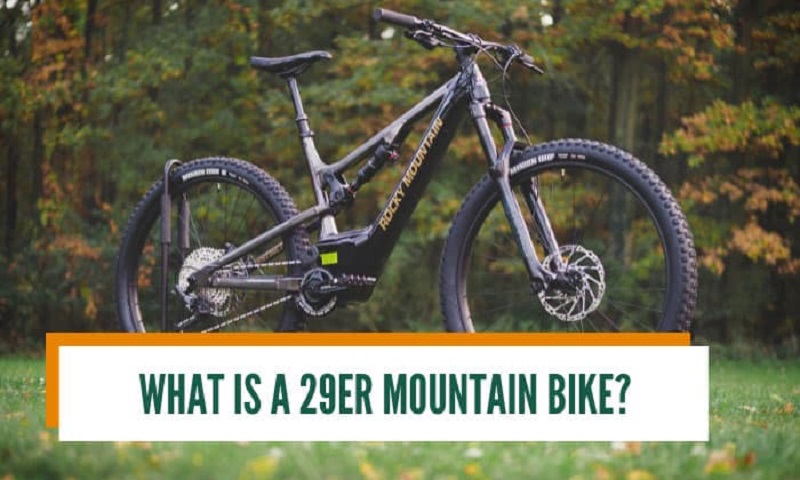
The key characteristics of 29er mountain bikes include:
- Larger Wheels: The 29-inch wheels provide a larger contact patch with the ground, which can lead to better traction and stability when compared to smaller wheels. This can be particularly advantageous when riding over rough terrain, as the larger wheels are better at rolling over obstacles like rocks and roots.
- Improved Rolling Momentum: The larger wheel diameter allows 29er bikes to maintain their rolling momentum more effectively. This means that once you get them up to speed, they tend to keep rolling with less effort, making them efficient for covering long distances or maintaining speed on flatter sections of a trail.
- Smoother Ride: The increased wheel size can also help to smooth out rough trails, as the larger wheels are less likely to be affected by small bumps and imperfections in the terrain.
- Better Angle of Attack: The bigger wheels result in a more shallow angle of attack when encountering obstacles, which can reduce the chances of getting stuck or experiencing abrupt impacts.
- Slightly Slower Acceleration: While 29er bikes have benefits in terms of rolling momentum, they may have slightly slower acceleration compared to bikes with smaller wheels. This can be noticeable when trying to accelerate from a standstill or navigate tight, technical sections of a trail.
29er mountain bikes have gained popularity in recent years, and they are often preferred by riders who prioritize stability and traction, especially on rocky and challenging trails. However, it’s important to note that the choice between a 29er and a bike with smaller wheels (commonly referred to as 27.5-inch or 26-inch wheels) can also depend on personal preferences, riding style, and the type of terrain you plan to ride on. Ultimately, the best choice for you will depend on your individual needs and riding preferences.
The Origin of 29er Mountain Bikes
The origin of 29er mountain bikes can be traced back to the early 2000s, and the concept emerged as a response to the prevailing standard of 26-inch wheels on mountain bikes. The development of 29er bikes was largely driven by a desire to create mountain bikes that offered improved performance and ride characteristics, especially on challenging off-road terrain. The concept of larger wheels had been explored earlier in the form of “700c” wheels, which are common on road bikes and touring bikes, but it took some time for the idea to gain traction in the mountain biking world.
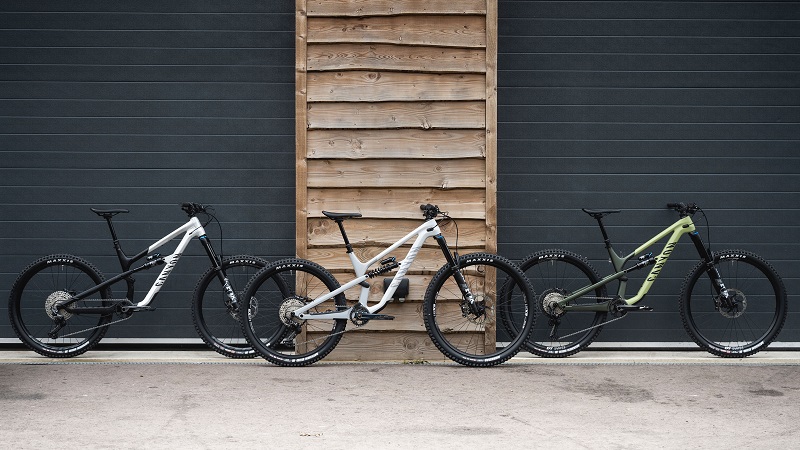
Several key factors contributed to the emergence and adoption of 29er mountain bikes:
The 29er Concept
The 29er concept involved using 29-inch wheels, which offered a larger contact patch and greater rolling momentum compared to the smaller 26-inch wheels. This larger wheel size was believed to provide better traction, stability, and the ability to roll over obstacles more easily, making it appealing to mountain bikers.
Early Innovators
One of the early pioneers of 29er mountain bikes was Gary Fisher, a well-known figure in the mountain biking community. Fisher began experimenting with larger wheels on mountain bikes in the early 2000s and played a significant role in popularizing the 29er concept.
Advancements in Frame and Component Design
To accommodate the larger wheels, frame and component manufacturers had to make adjustments and innovations. These changes included adapting frame geometries, creating compatible fork designs, and developing components like tires and rims specifically for 29er bikes.
Improved Traction and Ride Quality
As riders started to test 29er bikes on challenging trails, they began to experience the advantages of improved traction and a smoother ride, especially on rough and technical terrain. These benefits contributed to the growing popularity of 29er mountain bikes.
Widespread Adoption
Over time, more and more bike manufacturers began producing 29er models to meet the demand from riders seeking the benefits of larger wheels. This led to the widespread adoption of 29er mountain bikes in the mountain biking community.
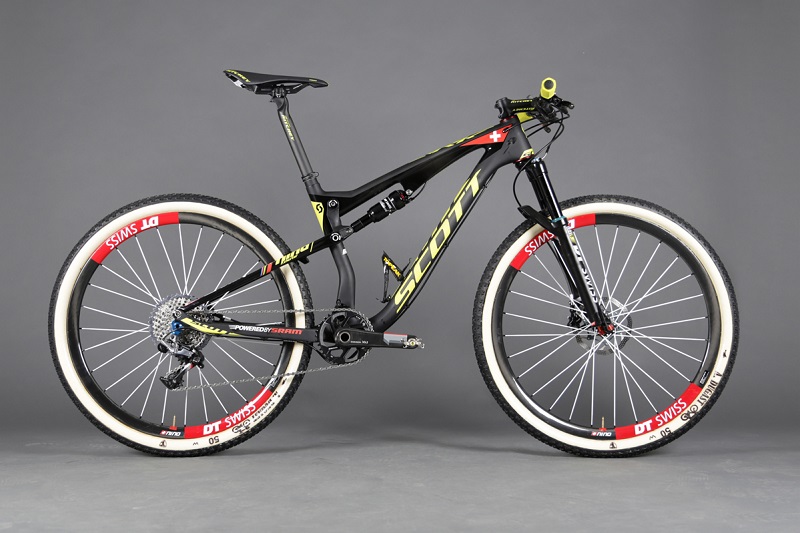
Today, 29er mountain bikes are a well-established category in the mountain biking industry, and they are available in various styles, including cross-country, trail, enduro, and downhill models. Riders have the option to choose between 29ers and other wheel sizes, such as 27.5-inch and 26-inch, based on their riding preferences and the type of terrain they plan to tackle. The 29er concept represents a significant evolution in mountain bike design and continues to be a popular choice for many riders.
Key Features of 29er Mountain Bikes
29er mountain bikes have several key features that distinguish them from bikes with smaller wheel sizes (e.g., 26-inch or 27.5-inch wheels). These features contribute to their unique characteristics and advantages for various types of mountain biking. Here are some of the key features of 29er mountain bikes:
29-Inch Wheels
As the name suggests, 29er mountain bikes are defined by their 29-inch wheels. The larger wheel size offers several benefits, including increased contact patch, improved traction, and better obstacle rollover capability.
Better Traction
The larger contact patch of the 29-inch wheels provides enhanced traction, especially when climbing steep hills or navigating loose and slippery surfaces. This results in better stability and control.
Smoother Ride
29er bikes tend to offer a smoother ride as the larger wheels can absorb and smooth out small bumps and imperfections in the trail. This can reduce rider fatigue and improve comfort.
Enhanced Momentum
The larger wheels maintain momentum more effectively, making it easier to keep speed on flatter sections of the trail. This can be advantageous for cross-country and endurance riding.
Stable Handling
29er bikes typically exhibit more stable handling, which can provide confidence and control when descending at high speeds or tackling technical descents.
Improved Traction on Corners
The larger wheels can provide better traction when cornering, enhancing the bike’s stability and grip during turns.
Slightly Slower Acceleration
One potential drawback of 29er mountain bikes is that they may have slightly slower acceleration compared to bikes with smaller wheels. This can be noticeable when starting from a standstill or when navigating tight and technical sections.

It’s important to note that while 29er mountain bikes offer many advantages, the choice between 29ers and bikes with smaller wheels ultimately depends on individual riding preferences, terrain, and intended use. Some riders may prefer the agility and responsiveness of smaller-wheeled bikes, while others appreciate the stability and traction of 29ers, especially on technical and challenging trails.
Pros and cons of 29er Mountain Bikes
29er mountain bikes offer various advantages and disadvantages, and the choice between a 29er and a bike with smaller wheels (e.g., 26-inch or 27.5-inch) depends on individual preferences and the type of riding you plan to do. Here are some pros and cons of 29er mountain bikes to consider:
Pros of 29er Mountain Bikes
- Improved Roll-Over: The larger 29-inch wheels roll over obstacles, such as rocks and roots, more easily than smaller wheels, providing a smoother ride and reducing the likelihood of getting stuck.
- Enhanced Traction: The increased contact patch with the ground offers better traction, especially on loose or slippery surfaces. This can be advantageous for climbing steep hills and maintaining control on technical descents.
- Better Stability: 29ers tend to have more stable handling, which can boost rider confidence when descending at high speeds or navigating challenging terrain.
- Enhanced Momentum: The larger wheels maintain rolling momentum more effectively, making it easier to maintain speed on flatter sections of the trail or during extended rides.
- Comfort and Reduced Fatigue: The larger wheels can absorb small bumps and imperfections on the trail, providing a smoother and more comfortable ride. This can reduce rider fatigue on long rides.
- Cornering Traction: 29er bikes often offer improved traction when cornering, providing better stability and grip during turns.
- Versatility: 29er mountain bikes come in various styles, including cross-country, trail, enduro, and downhill models, making them suitable for a wide range of riding conditions.
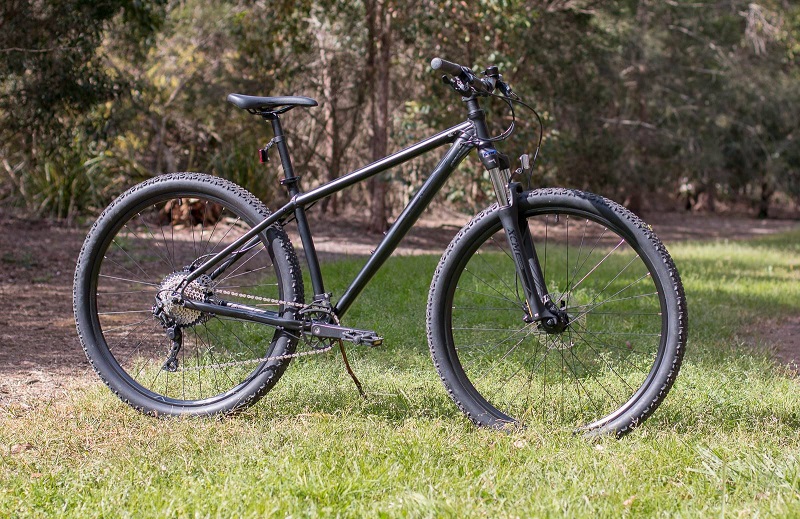
Cons of 29er Mountain Bikes
- Slightly Slower Acceleration: Due to the larger wheel size, 29ers may have slightly slower acceleration, which can be noticeable when starting from a standstill or navigating tight and technical sections of the trail.
- Handling on Tight Turns: In very tight and twisty trails, 29ers might not be as agile as bikes with smaller wheels, which could affect their handling in these conditions.
- Frame Size Considerations: Some riders with shorter inseams or smaller body frames may find it challenging to find the right size 29er frame. The larger wheels can raise the standover height.
- Weight: 29er wheels, tires, and frames can be slightly heavier than their smaller counterparts, which may affect the overall weight of the bike.
- Customization and Parts Availability: While 29ers are widely available, you may find fewer customization options and component availability compared to bikes with smaller wheels.
- Personal Preference: Ultimately, the choice between a 29er and a bike with smaller wheels often comes down to personal preference, riding style, and the type of terrain you frequently encounter.

29er mountain bikes offer many advantages in terms of improved roll-over, traction, stability, and comfort, but they may have some drawbacks, including slower acceleration and potentially reduced agility in very tight trail conditions. It’s essential to test ride different bikes and consider your specific riding needs to determine which wheel size best suits you.
Why a 29er Mountain bike?
Choosing a 29er mountain bike over a bike with smaller wheels (e.g., 26-inch or 27.5-inch) can be a matter of personal preference and depends on your riding style, the type of terrain you encounter, and your specific goals. Here are some reasons why someone might opt for a 29er mountain bike:
- Improved Roll-Over Capability: 29er wheels are larger, which allows them to roll over obstacles like rocks, roots, and rough terrain more easily. This can result in a smoother and more comfortable ride, as well as reduced chances of getting stuck or experiencing abrupt impacts.
- Enhanced Traction: The larger wheel diameter provides a larger contact patch with the ground, improving traction. This can be especially advantageous when climbing steep hills, riding on loose or slippery surfaces, or navigating technical terrain.
- Better Stability: 29er bikes often exhibit more stable handling, offering greater control and confidence when descending at high speeds or tackling challenging terrain. The larger wheels contribute to a more balanced and stable ride.
- Momentum Retention: The larger wheels maintain rolling momentum more effectively, which can help you maintain speed on flatter sections of the trail or during extended rides. This is beneficial for cross-country and endurance riding.
- Comfort and Reduced Fatigue: 29er wheels can absorb small bumps and imperfections on the trail, providing a smoother and more comfortable ride. This can reduce rider fatigue on long rides and enhance overall comfort.
It’s essential to consider your individual needs and riding preferences when deciding whether a 29er mountain bike is the right choice for you. While 29ers have several advantages, they may not be the best option for everyone. Smaller-wheeled bikes can offer greater agility and responsiveness in tight and technical terrain, and the choice often depends on your riding style and the specific challenges you encounter on your favorite trails. Test riding different bikes and consulting with experienced riders and bike shop experts can help you make an informed decision.
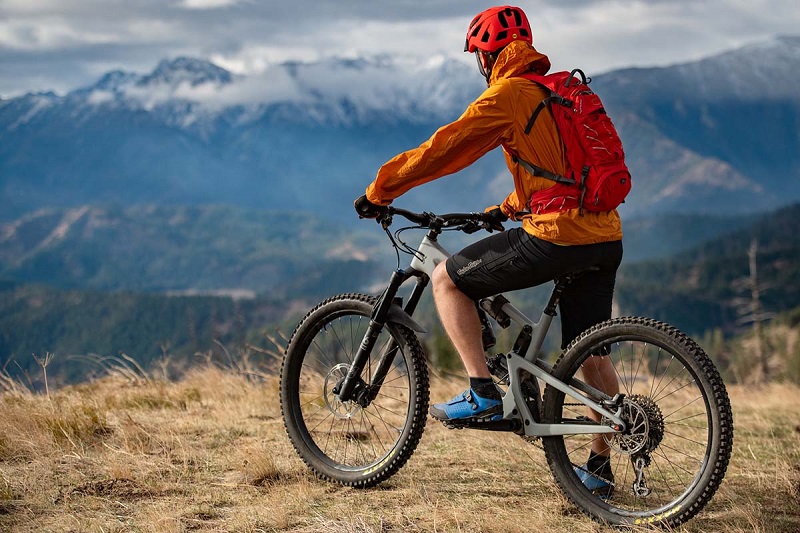
How much do 29er Mountain Bikes cost?
The cost of 29er mountain bikes can vary widely depending on several factors, including the brand, the specific model, the components and features, the type of riding the bike is designed for, and the materials used in its construction. Here’s a general price range for 29er mountain bikes:
- Entry-Level 29er Mountain Bikes: These bikes are typically priced between $500 and $1,000. They are suitable for beginners and riders on a budget. They usually come with basic components and may not have the most advanced features.
- Mid-Range 29er Mountain Bikes: Mid-range 29er bikes can cost between $1,000 and $2,500. These bikes offer a good balance between price and performance, often coming with more reliable components and better frame materials.
- High-End 29er Mountain Bikes: High-end 29er mountain bikes can range from $2,500 to $5,000 or more. These bikes are designed for experienced riders and enthusiasts. They come with top-tier components, advanced frame materials, and the latest technology. Some premium models can even exceed $10,000.
- Custom or Boutique 29er Mountain Bikes: If you’re looking for a custom-built or boutique 29er mountain bike with unique specifications, materials, and handcrafted frames, the cost can vary significantly. Prices for such bikes can start at several thousand dollars and go up significantly, depending on the level of customization and craftsmanship.
- Used 29er Mountain Bikes: You can also find used 29er mountain bikes at various price points, depending on the condition, age, and specifications of the bike. Used bikes can offer good value for money but should be inspected carefully before purchase.
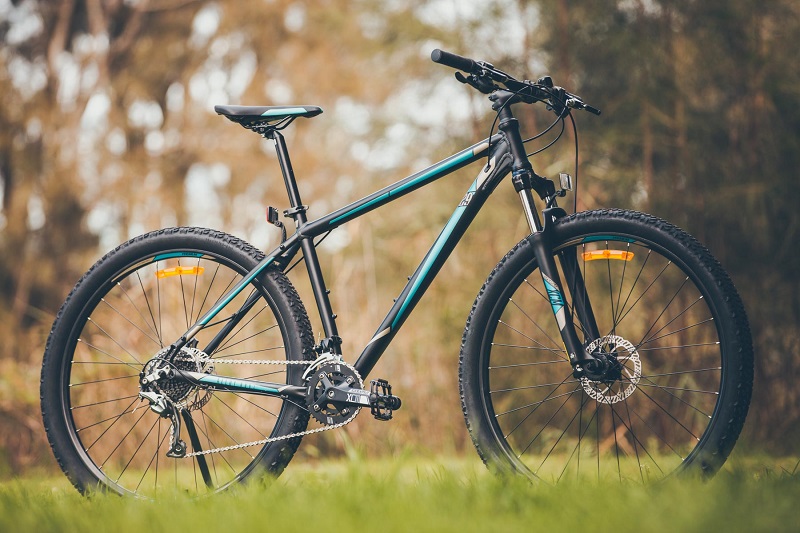
It’s important to keep in mind that while the initial cost of the bike is a significant consideration, you should also budget for additional expenses, such as protective gear, accessories, maintenance, and repairs. Furthermore, your specific riding needs and the type of terrain you plan to tackle should guide your choice, as different styles of 29er mountain bikes (e.g., cross-country, trail, enduro, downhill) are optimized for different types of riding.
If you’re considering buying a 29er mountain bike, it’s a good idea to visit local bike shops, test ride different models, and discuss your requirements with knowledgeable staff to find a bike that suits your budget and riding preferences.
In Conclusion
What Is a 29er Mountain Bikes, the answer has been explained in detail above. 29er mountain bikes have carved a significant place in the world of mountain biking. Their larger wheels offer improved roll-over capabilities, better traction, and enhanced stability. These advantages make 29er mountain bikes an excellent choice for riders seeking high-performance experiences over a variety of terrains.
While 29ers may not be the perfect fit for everyone, their versatility and comfort make them a compelling option for many. As the mountain biking industry continues to evolve, 29er designs have also improved, addressing some of the potential drawbacks associated with larger wheels.
If you’re in the market for a mountain bike that can handle a wide range of riding conditions and provide an exhilarating experience, a 29er mountain bike is certainly worth considering. As with any significant cycling purchase, it’s essential to test ride various models to find the one that best suits your riding style and preferences.
Remember that the world of mountain biking is diverse, and the ideal bike for one rider may not be the same for another. Your personal preferences, the type of trails you frequent, and your riding goals should all play a significant role in your choice of a mountain bike.
In the end, the best mountain bike is the one that puts a smile on your face and allows you to explore the great outdoors with confidence and enthusiasm. Whether you opt for a 29er mountain bike or another type, the most important thing is to get out there and enjoy the ride.

